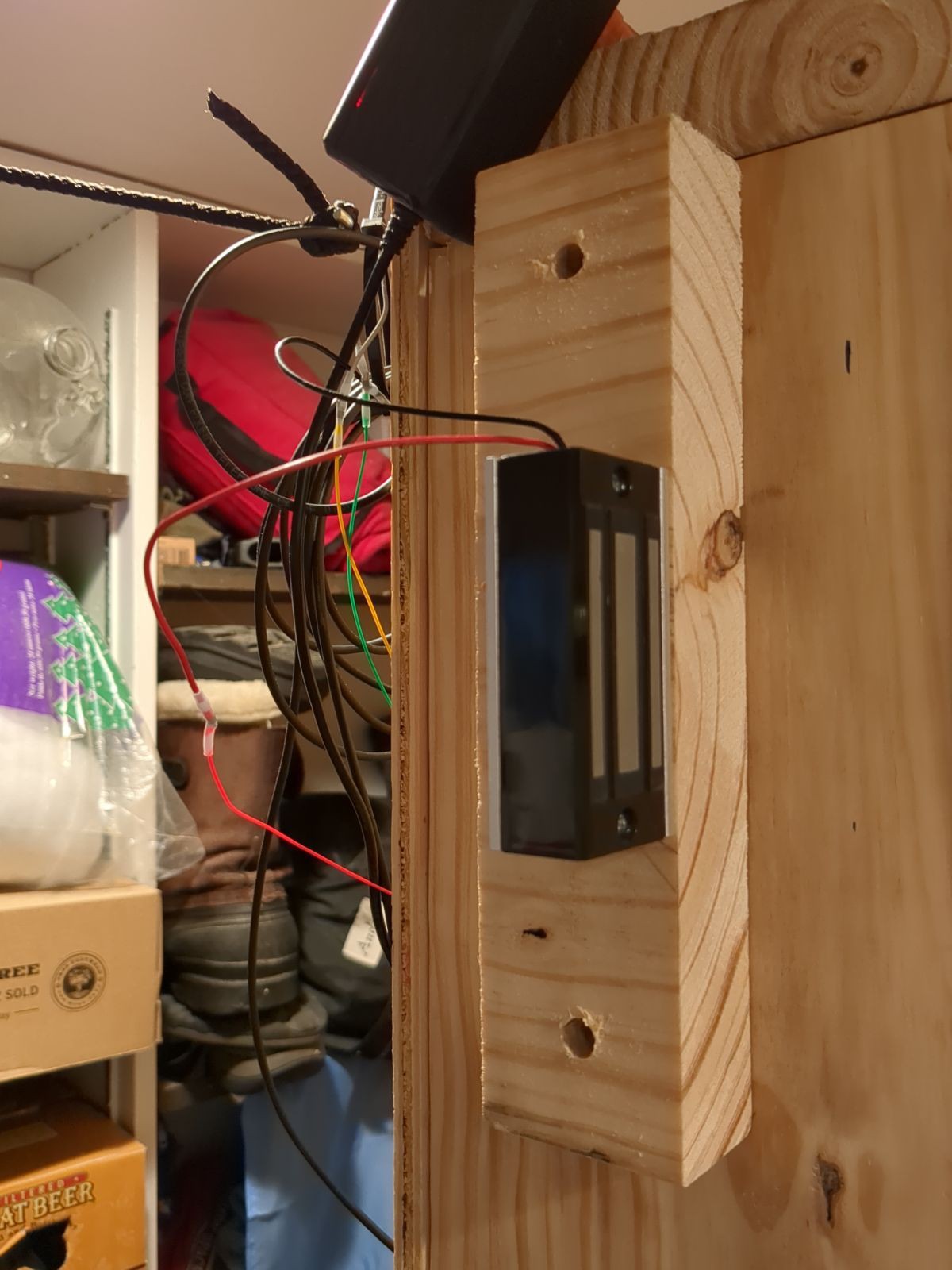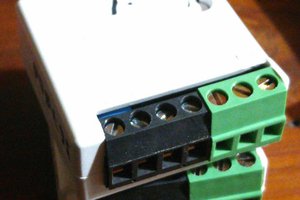I started with just the physical build of the door/bookcase, since I knew the rest would be fairly easy and I didn’t have anything specific in mind on the operational side, so any compromises I had to make later wouldn’t be a big deal. I was also a little concerned about the physical durability of the whole thing, since I knew I’d be adding a lot of extra weight compared to a normal door and I honestly knew nothing about the quality of the work of whoever framed in the doorway I would be using (not to mention that it had never had a door installed). After some brainstorming and looking through things I already had on hand (Keeping costs down was a priority on this project, since I just couldn’t justify spending much on what is essentially a gag), I landed on using a sheet of plywood for the back and simple 2x10s for the bookcase and shelves. I had 4 leftover door hinges and enough hardware to put it all together, so all I had to purchase was the lumber. (I had planned to use something thinner for the shelves, but all I could find at my local lumber yard was MORE expensive than 2x10s.) After some quick hand calculations to see how much it would weigh, I found it should come in well under 100lbs which seemed very doable for normal door hinges and framing.
A quick run to the store and I was back with all of my needed supplies. After very careful measurements, I spent a morning cutting and assembling the entire thing outside before taking it downstairs for a test-fit. Huzzah, it fit! After mounting it with the hinges, I (unsurprisingly) found that it wouldn’t quite close. Since I used screws for everything, it would have been fairly easy to take it apart and make it narrower, but I opted to try counter-sinking the hinges into the doorway a bit with a router to see if I could make it work. A heap of sawdust later and I had a bookcase that could swing fully closed!
For the locking mechanism, I started off with a small and cheap solenoid door latch I had leftover from a previous project. I ended up designing and 3D printing a latching mechanism for it to catch and after installing it, I was kind of bummed out. After checking my wiring repeatedly, I ultimately found that the latch was just VERY finicky about ANY friction keeping it from engaging to the point that it only rarely worked as intended. After a little research, I landed on a magnetic lock (like those used for security doors) and found one on Amazon for a reasonable price. After waiting for it to arrive and then testing it out, it worked like a treat! It claimed to be rated for 160lbs of force, and while I didn’t test this to it’s limit, it’s never unlocked even with some fairly firm pushing on the door.

The next thing I wanted was for the door to open on it’s own once unlocked. Opting to use what I had on hand again, I landed on using a small dumbbell weight, a piece of rope and 2 hooks. With one hook on the door and another in the direction I needed to pull it I had a very functional door opener. However, I then ran into my next minor problem. The space outside my office is carpeted and while there was enough clearance for the door to close, it was a little tight and the friction from the carpet kept the door stuck shut even with a fairly large weight attached. Opting to use my router again instead of shortening the whole thing, I was soon able to both hold the door closed with the magnetic lock AND have it slowly swing open when unlocked.
The final piece was how to unlock it. Since my office is in the path to doing the laundry (and the furnace & hot water heater), I knew I wanted to keep it simple for daily use (so no fingerprint/eye scanners or number pads requiring meaningful extra effort; I wanted to go with the tried and true ‘secret book’ trigger. I opted for a reed switch sensor as I had a bunch already and found that the ones I had were capable of detecting the magnet through the plywood on the back. I’m a bit of a ‘space nerd’ and also found the pun...
Read more » Ben Brooks
Ben Brooks
 Turo Heikkinen
Turo Heikkinen
 Albert Gonzalez
Albert Gonzalez

 pseudozach
pseudozach